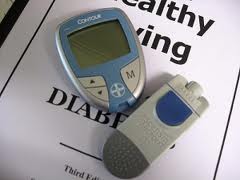 Did you know that type 2 diabetes is the most common form of diabetes? Type 2 diabetes is a chronic disease in which your body’s sugar levels (glucose) are too high. This condition is due to a problem with how your body makes or uses insulin, a hormone that regulates the amount of glucose in your body. Insulin helps your body’s cells absorb glucose from the blood. Your cells store and use glucose for energy.
Did you know that type 2 diabetes is the most common form of diabetes? Type 2 diabetes is a chronic disease in which your body’s sugar levels (glucose) are too high. This condition is due to a problem with how your body makes or uses insulin, a hormone that regulates the amount of glucose in your body. Insulin helps your body’s cells absorb glucose from the blood. Your cells store and use glucose for energy.
Type 2 diabetes typically occurs slowly – and quietly – over time. But people with type 2 diabetes often develop prediabetes first. With prediabetes, your blood sugar is higher than normal but not high enough to be considered diabetes. It may take ten years or more for you to develop full-blown diabetes.
About 79 million people have prediabetes, according to the American Diabetes Association. But how do you know if you’re at risk for developing prediabetes?
 Some factors that can increase your chances of prediabetes happening include:
Some factors that can increase your chances of prediabetes happening include:
- Increased age, especially after age 45
- Being overweight or obese
- Being less active
- Having a parent or sibling with type 2 diabetes
- Being African-American, Hispanic, Native American, Asian-American, or Pacific Islander
- Having high blood pressure
- Having an HDL (“good”) cholesterol level of 35 or lower, or a triglyceride level of 250 or higher
However, the good news is there are things you can do to turn your prediabetes around – and possibly prevent the development of type 2 diabetes. Some steps include:
- Have your blood glucose tested annually, especially if you’re 45 years or older.
- Eating a diet low in fat and calories. Adding more vegetables, fruits, and whole grains to your diet, which are high in soluble fiber, can help control your blood insulin and glucose levels.
- Increasing your level of physical activity to help reduce insulin resistance. Get at least 30 minutes of moderate physical activity every day.
- Maintaining a healthy weight. Even losing as little as 5% to 10% of your body weight can help reduce your risk.
By making positive lifestyle changes, you can reduce your risk of diabetes while staying healthier longer.
Protecting Your Feet from Diabetes Complications
Did you know that diabetes can cause you to develop foot problems? These problems are often due to nerve damage (neuropathy) or poor circulation in your feet. Unfortunately, because of this, people with diabetes have a higher risk of developing foot ulcers and infections. And in severe cases, these infections may lead to amputation.
However, these conditions can be preventable with regular foot care and proper footwear. One thing you can do is to wear comfortable, properly fitted shoes to protect your feet. Refer to our Shoe Fitting Guidelines for more information on how to properly fit your shoes. Also, custom orthotics, like the ezWalker® Custom Performance Orthotics, can reduce your risk of developing foot problems by guiding your feet into a more desirable biomechanic position. These custom orthotics can unload unwanted pressure on the bottoms of your feet, reducing your risk of developing foot ulcers. Plus, by redistributing your weight evenly across your feet, ezWalker® Custom Orthotics can relieve your foot pain, so you can stay more active to improve your blood glucose levels.
For more information on ezWalker® Custom Performance Orthotics, visit our website. We offer a 90-day, money-back guarantee, so you have nothing to lose but your foot pain. Try them today!
Because … when your feet feel good, you feel good.
Note: If you already have diabetes and suffer from neuropathy or poor circulation, ask your doctor about wearing custom orthotics. In these cases, custom orthotics with accommodating support are recommended to reduce pressure and prevent excess friction on the foot that can lead to skin ulcers. However, if you already suffer from foot ulcers, it is recommended that the ulcers be healed first before orthotic use.
If you follow these suggestions and your condition does not improve, consult with your doctor for proper diagnosis and treatment.

